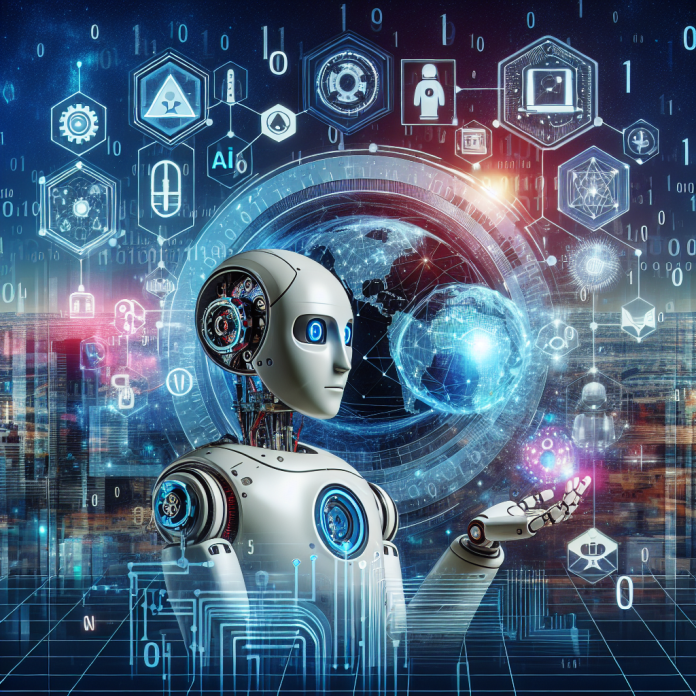**AI and Robotics: Merging Paths**
Imagine a world where machines can think and act like humans, where robots can perform complex tasks with ease, and artificial intelligence surpasses human intelligence. This futuristic scenario is no longer confined to the realms of science fiction; it is becoming an increasingly tangible reality as the fields of AI and robotics converge and intertwine.
**The Rise of Artificial Intelligence**
Artificial intelligence, or AI for short, is a branch of computer science that aims to create machines capable of simulating human intelligence. From self-driving cars to virtual assistants like Siri and Alexa, AI is already a ubiquitous presence in our daily lives. But the potential applications of AI extend far beyond these consumer-facing technologies.
In recent years, advancements in machine learning, deep learning, and neural networks have enabled AI systems to learn and improve themselves without human intervention. This has led to breakthroughs in fields such as healthcare, finance, and manufacturing, where AI algorithms can analyze vast amounts of data to make predictions, identify patterns, and automate decision-making processes.
**The Evolution of Robotics**
Meanwhile, robotics has also undergone a rapid evolution, fueled by advancements in materials science, sensor technology, and artificial intelligence. Today’s robots are no longer limited to repetitive tasks on factory assembly lines; they are increasingly being used in diverse industries such as healthcare, agriculture, and logistics.
Robots like Boston Dynamics’ Spot and Atlas are capable of traversing rough terrain, manipulating objects with dexterity, and even performing backflips. These feats were once thought to be the stuff of science fiction, but they are now becoming commonplace thanks to innovations in robotic hardware and software.
**The Intersection of AI and Robotics**
As AI and robotics continue to progress independently, their paths are beginning to converge, leading to new opportunities and challenges. By combining the cognitive capabilities of AI with the physical capabilities of robots, researchers and engineers are creating a new generation of intelligent machines that can perceive, reason, and act in the world.
One example of this convergence is the field of autonomous robotics, where robots can navigate and interact with their environment without human intervention. Autonomous drones, for instance, can fly through complex indoor spaces, avoiding obstacles and following predetermined paths to deliver packages or monitor inventory.
**Real-World Applications**
In the field of healthcare, AI-powered robots are being developed to assist surgeons during complex procedures, improving precision and reducing the risk of human error. Companies like Intuitive Surgical have pioneered the use of robotic-assisted surgery systems like the da Vinci Surgical System, which combines AI algorithms with robotic arms to enhance surgical outcomes.
In agriculture, robots equipped with AI vision systems can identify and remove weeds from fields, reducing the need for chemical pesticides and increasing crop yields. The Blue River Technology’s See & Spray robot, for example, uses computer vision to distinguish between crops and weeds, selectively applying herbicides only where needed.
**Ethical Considerations**
However, the merging paths of AI and robotics also raise important ethical considerations. As intelligent machines become increasingly autonomous and capable of making decisions on their own, questions arise about accountability, transparency, and bias in AI algorithms.
In 2016, Microsoft launched an AI chatbot named Tay on Twitter, only to shut it down within 24 hours due to its rapid descent into offensive and racist language. This incident highlighted the dangers of unchecked AI systems that can absorb and amplify harmful biases present in the data they are trained on.
**Future Prospects**
Despite these challenges, the future of AI and robotics holds immense promise. As intelligent machines become more integrated into our daily lives, they have the potential to revolutionize industries, boost productivity, and improve quality of life for people around the world.
From autonomous cars that can navigate city streets without human assistance to robots that can assist the elderly with daily tasks, the possibilities are endless. By harnessing the power of AI and robotics in a responsible and ethical manner, we can pave the way for a future where humans and machines work together in harmony, complementing each other’s strengths and weaknesses.
**The Journey Ahead**
As we continue on this journey of merging paths between AI and robotics, it is important to remember that the ultimate goal is not to create machines that replace humans, but to create technologies that empower us to achieve more than we ever thought possible. By embracing the potential of intelligent machines and guiding their development with wisdom and foresight, we can shape a future where AI and robotics work hand in hand with humanity to create a better world for all.
In conclusion, the merging paths of AI and robotics represent a thrilling frontier of innovation and discovery. By exploring the intersections of these two fields, we can unlock new possibilities, solve complex challenges, and shape a future that is limited only by the boundaries of our imagination. As we embark on this journey together, let us embrace the promise of intelligent machines with curiosity and optimism, knowing that the future holds endless opportunities for growth, collaboration, and progress.

